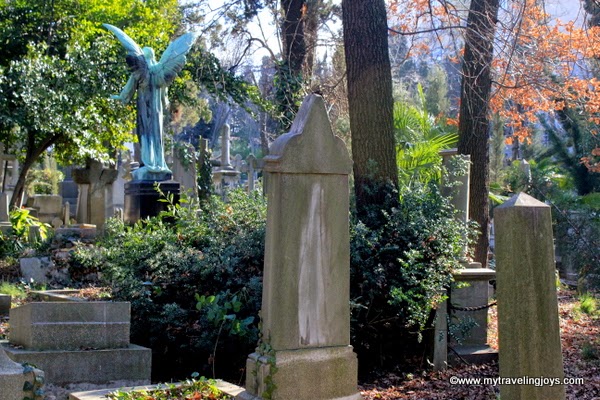I’m usually very typeA personality when it comes to
planning our trips. I map out whole days involving every meal, sightseeing and
where we can eat or drink in between sightseeing.
However, every now and then, I step back and put the
planner down. In March, we booked a weekend trip to Lake Como, Italy, with our foodie friend from Germany.
I hardly planned a thing for this trip because I trust our friend when it comes
to food and he had visited the area a few summers ago. I also was traveling
with a recently sprained ankle so I wasn’t too mobile yet.
After a 90-minute drive from Bergamo airport, we arrived
at a cloudy-covered, but still beautiful Lake Como. I had no expectations for
this place, especially since we were visiting in a very off-peak season.
Our first order of business was finding food. Luckily,
our agriturismo owner recommended a local wine bar that perfectly (and cheaply)
served our needs. We consumed 8 glasses of wine and a large platter of Italian
cured meats at Comini Enoteca, Via
Montello 1, in Mandello del Lario, for only 40 euros! This was a fantastic start
to our weekend at Lake Como.
Afterwards, we drove down and parked at the local train
station so it wouldn’t be too far for me to hobble downhill to the pier area in
Mandello del Lario. We stopped at what seemed like the only open café where we
bought gelato and walked along the pier.
Then, we continued north up the coast to the next town of
Varenna so we could figure out the
ferry boat schedule for the next day. Varenna was full of charming, rustic
houses, narrow, cobble-stoned paths and a long lakeside promenade. I’m sure the
town is even prettier when the weather is nice.
On Sunday, we woke up to these wonderful views from our
hillside agriturismo, Crotto di Somana.
If you visit Lake Como, I can highly recommend our agriturismo,
which had been recently renovated around a “crotto,” a natural cave typical of
the mountain regions of the surrounding Lombard and Swiss Alps. After a
pleasant breakfast featuring homemade jams, breads and cheeses, we left early
to catch the ferry boat from Varenna to Bellagio.
 |
| View of Bellagio on Lake Como from the ferry boat. |
The resort town of Bellagio has an ideal lakeside
location so the rich and famous can just pull up in their fancy boats. We didn’t
see anyone famous, just some British tourists. We wandered around a bit and
then plunked ourselves down lakeside to enjoy the sunny weather.
From Bellagio, we decided to catch the ferry boat to
Menaggio, located on the lake’s western side closer to where George (Clooney)
lives. Unfortunately, our plans to meet up with George fell through so we
decided to drive to Switzerland!
 |
| Visiting Lake Como in March was the perfect season for us because it wasn't crowded. |
 |
| The town of Menaggio. |
The drive was only about 45-minutes from Menaggio to the town of Lugano in Switzerland. But first we were stopped by the cops. We hadn’t
done anything wrong, just had to wait for a cycling race to pass through, so we
got out to take photos.
 |
| The clear waters of nearby Lago di Lugano looked quite inviting! |
Lugano itself didn’t look as picturesque as the towns by Lake
Como, so we stayed long enough to have a drink and enjoy the views.
Back in Menaggio, our plans went sideways. We parked the
car in line for the next ferry boat and ran into a small café for something to
eat. We didn’t have much time, so our friend went back out to the car. Well,
hubby and I got distracted and soon enough we were running outside just in
time to see the ferry boat pulling away from the shore. We literally had missed
the boat!
We had to wait another hour for the next ferry boat while
our friend had a drink back in Varenna and (thankfully) waited for us with the
car. At least, we saw the sunset over Lake Como.
We ended our lazy weekend with a home-cooked, four-course
dinner at one of the best places in Mandello del Lario – Osteria Sali e Tabacchi.
Eating here was like being invited into an Italian’s mother’s home. The dishes
were simple, but delicious and featured local ingredients. A few of the dishes
I remember: local fish in two dishes, cured Italian meats for an antipasti, braised
beef with polenta, pumpkin-filled ravioli and homemade pistachio gelato. Be
sure to make reservations in advance!
Despite having a badly sprained ankle, we were able to
sightsee a bit around Lake Como, relax and simply have fun catching up with our
good friend. I realized sometimes it pays not to have a perfect plan.
Have you been to Lake Como? If so, do you have
any recommendations for our next trip?




































































